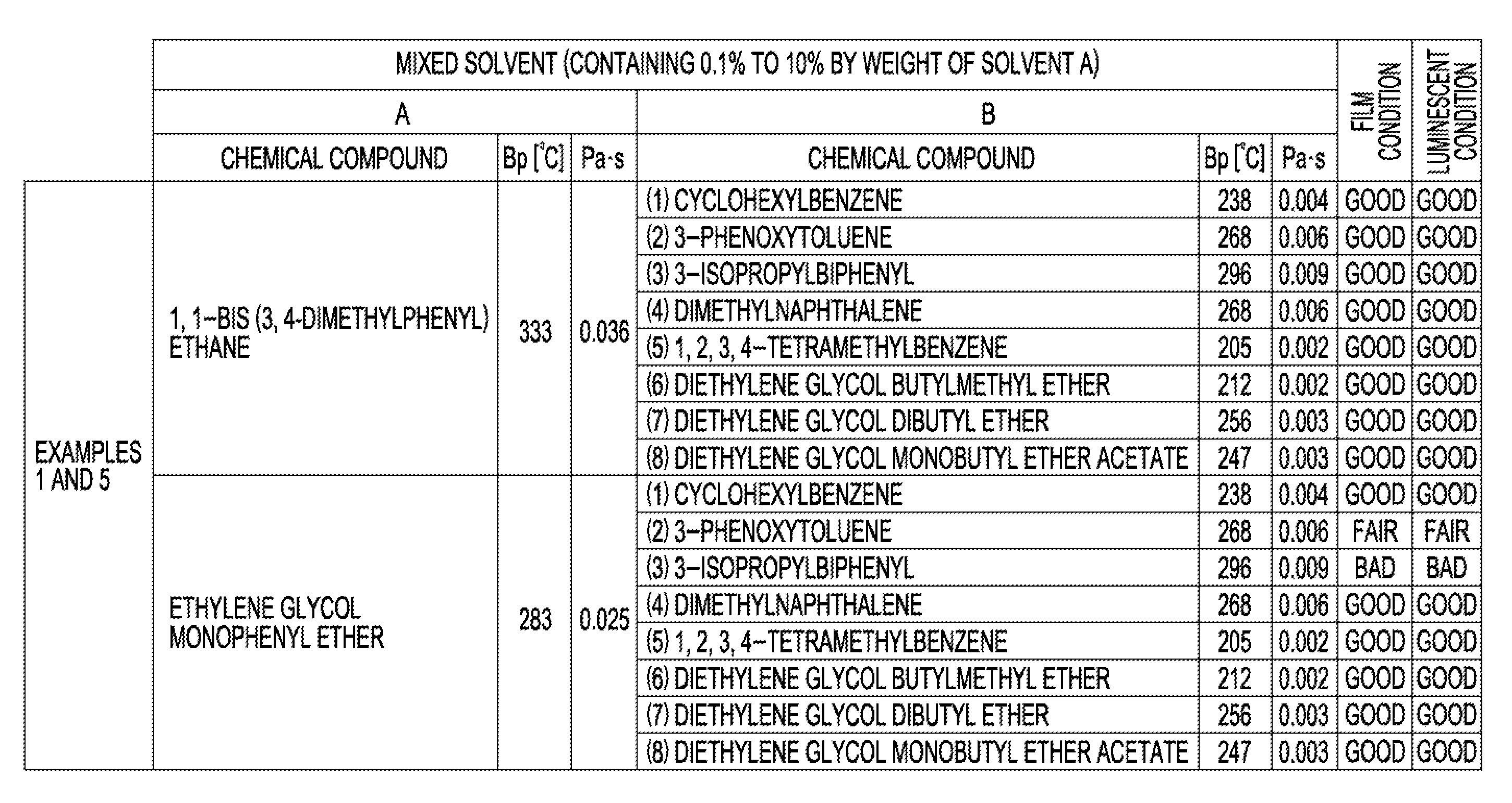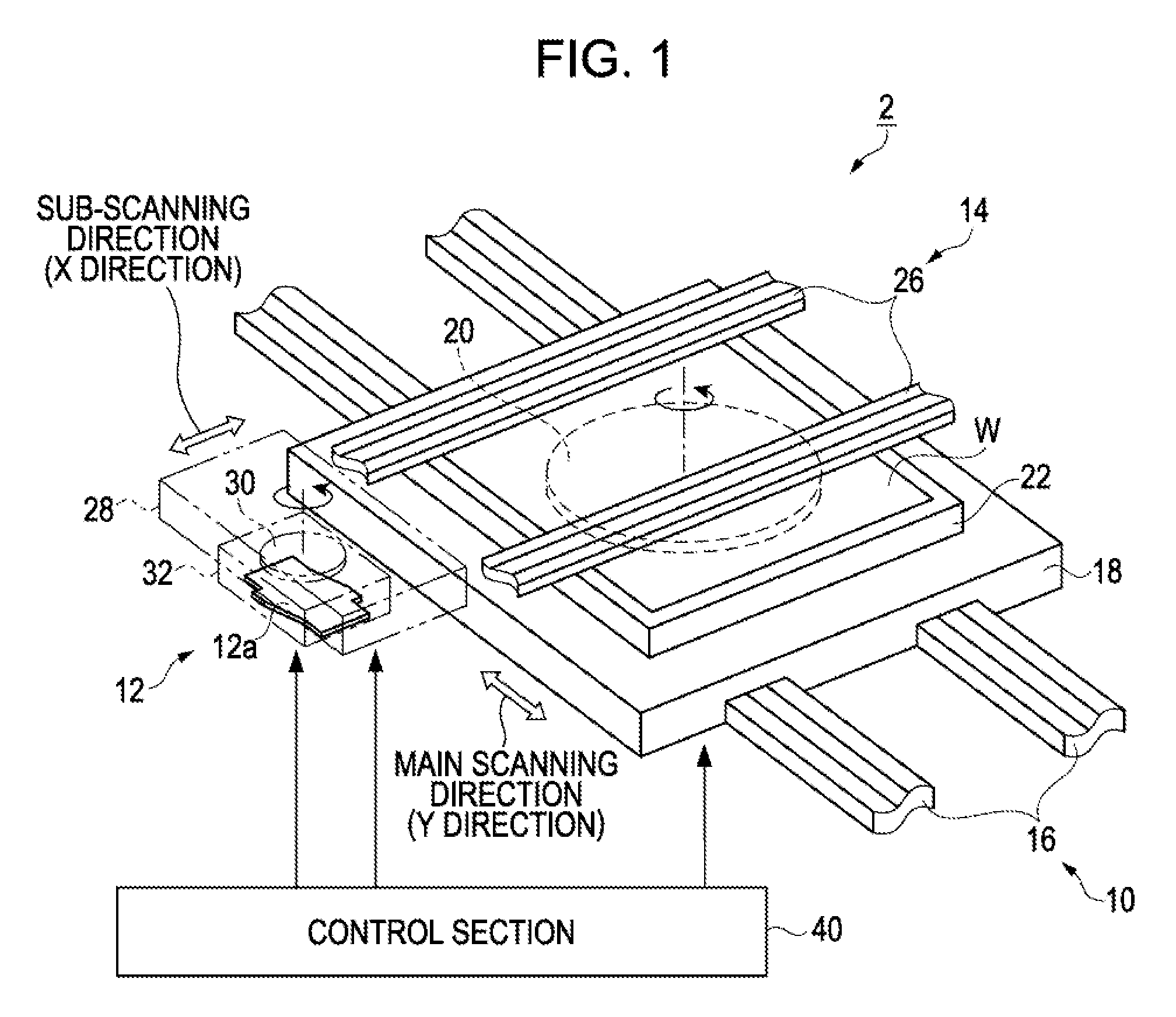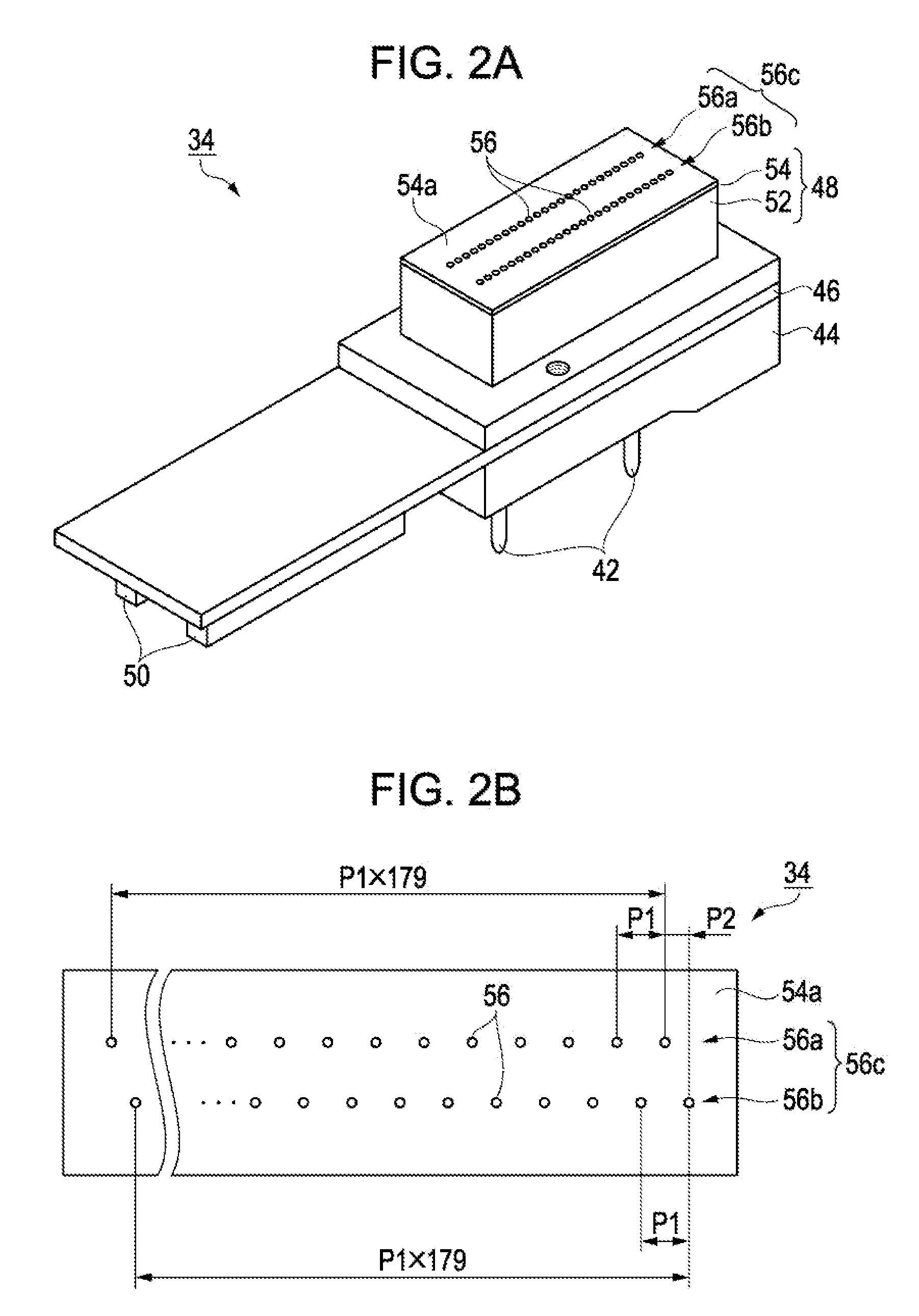Function layer ink, method for manufacturing light-emitting element, light-emitting device, and electronic apparatus
a technology of light-emitting elements and functional layers, which is applied in the direction of inks, solid-state devices, semiconductor devices, etc., can solve the problems of difficult to form a luminescent layer with desired optical properties and high yield, emission failure, and difficulty in uniform thickness of luminescent layers, so as to reduce brightness unevenness, good show, and high display quality
- Summary
- Abstract
- Description
- Claims
- Application Information
AI Technical Summary
Benefits of technology
Problems solved by technology
Method used
Image
Examples
first embodiment
Droplet Ejection Apparatus
[0042]An ejection apparatus that can eject droplets of a liquid containing a function layer material onto an ejection target will first be described with reference to FIGS. 1 to 4.
[0043]FIG. 1 is a schematic perspective view of an election apparatus according to an embodiment. As shown in FIG. 1, the election apparatus 2 of the embodiment includes a work transport mechanism 10 that transports a planar work W, which is an ejection target, in a first direction, or a main scanning direction (Y direction), of the work W, and a head transport mechanism 14 that transports a head unit 12 in a second direction, or a sub scanning direction (X direction), perpendicular to the main scanning direction.
[0044]The work transport mechanism 10 includes a pair of guide rails 16, a movable platen 18 that moves along the pair of guide rails 16, and a stage 22 disposed on the movable platen 18. A work W is placed on the stage with a rotation mechanism 20 therebetween.
[0045]The ...
example 1
[0151]First, hole injection layers were formed by an ink jet method to a thickness of 50 to 60 nm on a substrate provided with anode layers thereon. After being vacuum dried, the coating was fired by heating at 150° C. The hole injection layer material was PEDOT / PSS (1 / 20) that had been prepared by dispersing poly(3,4-ethylenedioxythlophene), which is a polythiophene derivative, in a disperse medium polystyrene sulfonic acid to prepare a dispersion, and further dispersing the dispersion in water. At this time, in order to perform stable ejection, a solvent having a high boiling point was added to the macromolecular PEDOT / PSS. Examples of the solvent having a high boiling point include aromatic hydrocarbons, isopropyl alcohol (IPA), n-butanol, γ-butyrolactone, N-methylpyrrolidone (NMP), dimethylformamide (DMF), hexamethylphosphoramide (HMPA), dimethyl sulfoxide (DMSO), 1,3-dimethyl-2-imidazolidinone (DMI) and its derivatives, and glycol ethers such as Carbitol acetate and butyl Carbi...
example 2
[0154]Luminescent layers were formed using solutions each containing 1.5% by weight of any of the same red, green and blue low-molecular-weight luminescent materials as in Example 1 in a mixed solvent (aqueous solvent A+aqueous solvent B, shown in the table of FIG. 10C). Other steps in the process for manufacturing the organic EL elements of Example 2 were the same as in Example 1.
PUM
| Property | Measurement | Unit |
|---|---|---|
| boiling point | aaaaa | aaaaa |
| boiling point | aaaaa | aaaaa |
| viscosity | aaaaa | aaaaa |
Abstract
Description
Claims
Application Information
 Login to View More
Login to View More - R&D
- Intellectual Property
- Life Sciences
- Materials
- Tech Scout
- Unparalleled Data Quality
- Higher Quality Content
- 60% Fewer Hallucinations
Browse by: Latest US Patents, China's latest patents, Technical Efficacy Thesaurus, Application Domain, Technology Topic, Popular Technical Reports.
© 2025 PatSnap. All rights reserved.Legal|Privacy policy|Modern Slavery Act Transparency Statement|Sitemap|About US| Contact US: help@patsnap.com



